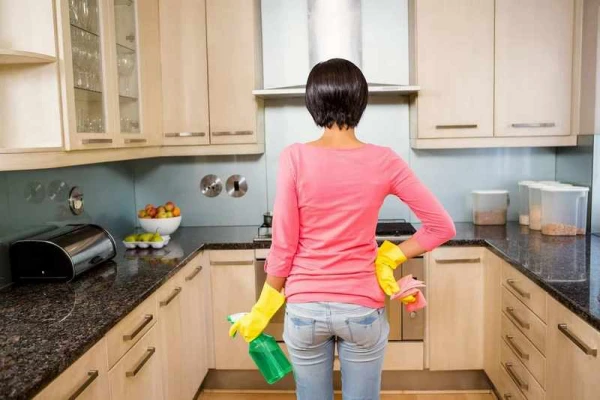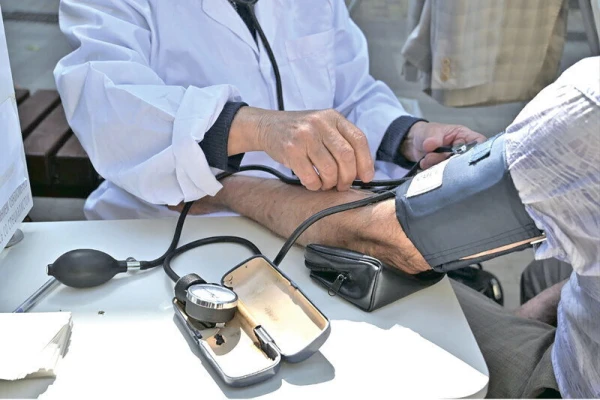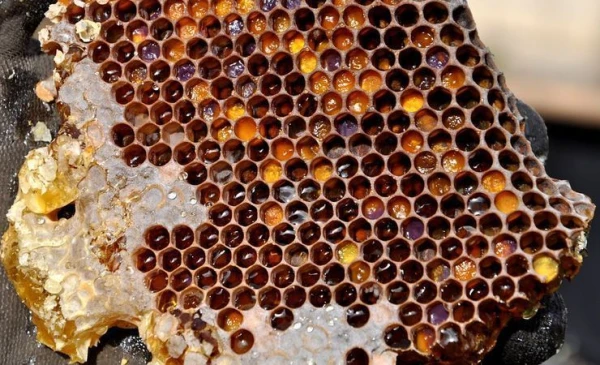
Cleaning the kitchen is no easy task. It seems there are too many details and never enough time. And why does no one explain how to do everything right? Mistakes in cleaning can lead to unpleasant odors and even food poisoning. To avoid these problems, let’s break down the 12 most common mistakes that we strongly recommend not to make.
The Water Temperature for Washing Dishes is Too Hot or Too Cold
The water for washing dishes should be warm, between 40-60 °C. This will help soften food residues and improve soap lathering. Boiling water will not aid in disinfection, and cold water will not effectively deal with grease.
Dishes can be safely used once there are no organic residues left on them: usually, a small amount of water, soap suds, and a little scrubbing are enough to remove harmful microbes.
You Wash Dishes in a Dirty Sink
The sink is a breeding ground for bacteria. Food residues accumulate in it, creating an ideal environment for microbes. Clean the sink every evening with soap and disinfect it once a week to prevent clean dishes from becoming contaminated.
You Wash Dishes When You Have Cuts on Your Hands
Cuts on your hands are dangerous when washing dishes. Bacteria such as Staphylococcus can enter the wound and cause infection, especially in people with weakened immune systems or the elderly. Use gloves to protect yourself, or ask household members to wash the dishes until your cuts heal.
You Don’t Wipe the Sink After Washing
After washing the sink, dry it. Bacteria thrive in moist environments, and wiping it dry will deprive them of a favorable breeding ground.
You Spend Too Much Time Washing Dishes Instead of Just Soaking Them
Don’t waste time and effort scrubbing off dried food; let it soak a bit. The longer you soak the dishes in hot soapy water, the less likely harmful bacteria like E. coli will transfer to your hands and other surfaces.
If the dish doesn’t come clean in 30 seconds, soak it in the clean sink for 15-30 minutes.
You Rarely Change Dish Sponges
A sponge is a microbiological bomb that can cause food poisoning.
There are several ways to successfully disinfect a sponge:
-
If it doesn’t have a metal layer, wet it and microwave it on high for one minute.
-
Rinse it in the dishwasher on the "heat without water" setting.
-
You can also minimize the number of bacteria on the sponge by never leaving it in the dirty sink or near the food preparation area. It’s also important to wring it out dry after washing dishes.
However, to maintain precautions, change the sponge every 7-10 days to avoid spreading bacteria around the kitchen and effectively removing residues from utensils.
You Have One Sponge for Everything
Separate cleaning zones to avoid transferring bacteria and do not use the same sponge for washing dishes, the sink, and the countertop.
Mold in the Refrigerator
If food is spoiling, there is a risk of cross-contamination.
If fruits or vegetables have become soft and mushy and are leaking liquid, it’s not enough to just wipe them. You need to remove the affected area and thoroughly wipe the entire shelf to prevent the spread of harmful bacteria.
Remove the food, shelves, and drawers, wash them with hot soapy water, disinfect them, and let them soak. Wipe the rest of the refrigerator with a bleach-based disinfectant and dry it off.
You Forget About Touch Points While Cleaning
Even if you thoroughly wipe the countertops, don’t forget other important areas in the kitchen, such as cabinet handles, refrigerator, oven, sink, and light switches. They are among the most contaminated and can be sources of cross-contamination. Bacteria from dirty handles can transfer to clean dishes or food.
We recommend paying special attention to these surfaces at the end of your cleaning. Use a clean cloth or paper towel with a cleaning solution or bleach and follow the manufacturer’s instructions.
You Don’t Clean the Dishwasher
A dirty dishwasher washes dishes poorly and promotes the growth of bacteria and mold. This can lead to unpleasant odors and even contamination.
To maintain cleanliness, periodically place a container with 240 ml of vinegar on the top rack and run a wash cycle. It’s also important to regularly clean the filter by soaking and scrubbing it with dish soap.
You Use One Cutting Board for Everything
Wooden cutting boards have their pros and cons. They have antimicrobial properties but are also very porous, which promotes the accumulation of microbes. When working with meat and onions, it’s essential to thoroughly disinfect the board using bleach or a dishwasher, which can damage the wood.
We recommend having two boards: one for meat and animal products made of non-porous material (metal, glass, plastic) and another for fruits and vegetables, such as a wooden one that is sufficient to wash with hot water and detergent.
You Don’t Pay Enough Attention to the Trash Can
Wrap spoiled food in airtight bags to avoid unpleasant odors and leaks in the trash can. Regularly check and clean the can if it is dirty.
By following these simple rules, you can keep your kitchen clean and safe, avoiding unpleasant odors and health risks.










